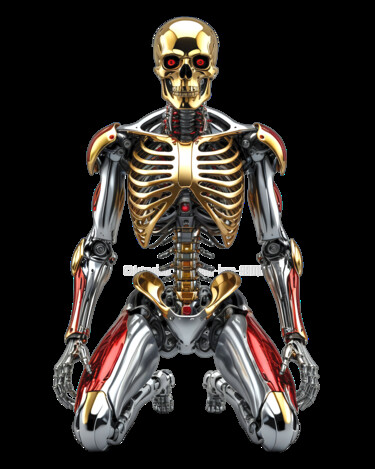
151 Originele limited editions en digitale kunstafdrukken te koop:
Bent u op zoek naar Originele digitale kunstwerken te koop ?
Ontdek alle stijlen en alle digitale kunsttechnieken: hedendaagse kunst, straatkunst, abstracte kunst, figuratieve kunst ... ArtMajeur is geschikt voor alle artistieke gevoeligheden en viert al 20 jaar schoonheid aan uw zijde met meer dan 3,6 miljoen hedendaagse kunstwerken om te ontdekken. .. of verwerven! Ontdek werken van hedendaagse kunstenaars van over de hele wereld om je interieur met klasse te decoreren! Eenvoudige kunstliefhebber of overtuigd verzamelaar? Vind het favoriete canvas of schilderij dat uw decoratie echt zal verbeteren. ArtMajeur biedt u originele werken, limited editions en art prints van de beste hedendaagse kunstenaars ter wereld. Op ArtMajeur worden digitale kunstwerken geselecteerd door liefhebbers en experts op de kunstmarkt. We selecteren voor u de originele werken van trendy, bekroonde en erkende kunstenaars, evenals de nieuwe opkomende waarden op het gebied van hedendaagse kunst om u te begeleiden en te helpen bij uw proces van online kopen van digitale kunst.
Discover contemporary Robot Digital Arts on ArtMajeur
Contemporary Robot Digital Arts is a form of art that uses technology to create unique and original pieces. This type of artwork is usually created using software programs like Adobe Illustrator or Photoshop, and is often printed on high-quality paper or canvas. Some artists also use materials such as metal, plastic, or even wood to create three-dimensional sculptures. What makes this type of art unique is its ability to blend the mechanical precision of robots with the creativity and emotion of human expression. It is a fascinating and evolving art form that raises important questions about the relationship between humans and machines, and the role of technology in our lives.

©2024 Art Digital
Origins and History
The emergence of contemporary Robot Digital Arts can be traced back to the mid-20th century. The term "robotics" was coined in the 1940s by science-fiction writer Isaac Asimov, and the first industrial robot was introduced in 1954. With the advent of computer technology in the 1960s and 1970s, artists began to experiment with using machines to create art. This led to the development of the first "robotic art" installations in the 1980s. In the 1990s, robotics and digital technologies became more accessible to artists, allowing for greater experimentation and innovation. The use of robots and digital technologies in art continues to evolve, with artists exploring themes such as AI, technology, and the relationship between humans and machines. Today, contemporary Robot Digital Arts is a thriving field, with artists using robotics, AI, and other emerging technologies to create immersive and engaging experiences.
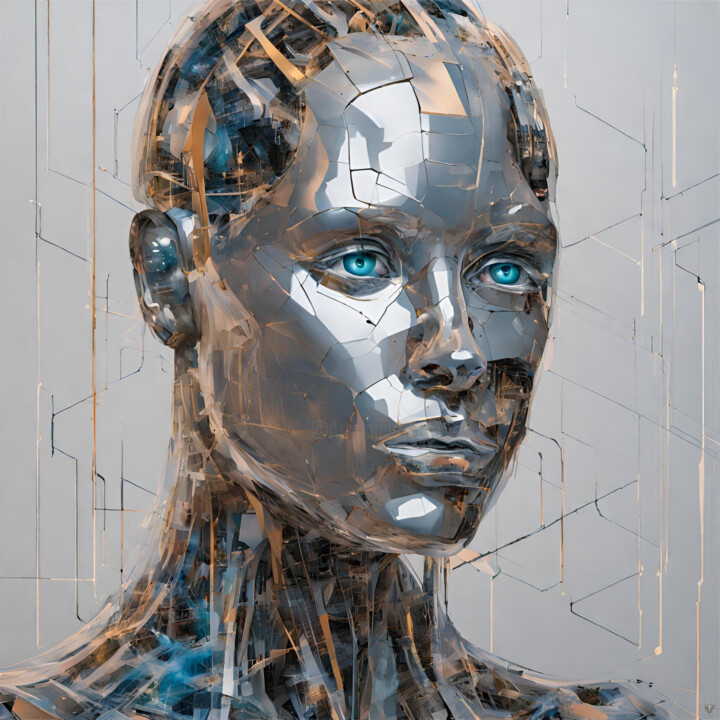
©2023 Reskatorsilver
Evolutions of theses works in the contemporary art market
In recent years, the world of contemporary art has witnessed a significant evolution in the field of Robot Digital Arts. The use of robots in artistic expression has opened up a whole new world of creative possibilities, leading to a surge in interest from both artists and collectors alike. These robotic creations are often programmed to interact with their environment, creating unique and unpredictable outcomes that challenge traditional notions of art. The importance of Robot Digital Arts in the contemporary art market cannot be overstated, as it represents a bold and exciting new direction for artistic expression.

©2023 Reskatorsilver
Related Famous Artists
Contemporary robot digital arts have been a popular theme for many artists in recent years. Among them are:
Neil Harbisson, a British-Catalan artist who is known for his cyborg-like creations. He is considered one of the pioneers of the cyborg art movement and has created a number of installations that blur the line between human and machine.
Ken Rinaldo, an American artist who is known for his robotic installations that explore the relationship between humans, animals, and machines. His work often involves living organisms, such as fish or plants, and uses technology to create interactive and immersive experiences.
Chico MacMurtrie, an American artist who creates robotic sculptures that are designed to mimic the movements of living organisms. His work often explores the relationship between humans and nature, and uses technology to create a sense of wonder and awe.
Patrick Tresset, a French artist who creates robotic installations that are designed to mimic human behavior. His work often involves using artificial intelligence to create machines that can draw or paint, and explores the boundaries between human creativity and machine intelligence.
Nam June Paik, a Korean-American artist who is considered one of the pioneers of video art. His work often involves using technology to create immersive installations that explore the relationship between humans, machines, and media.
These artists have all made significant contributions to the field of contemporary robot digital arts, and their work continues to inspire and challenge audiences around the world.
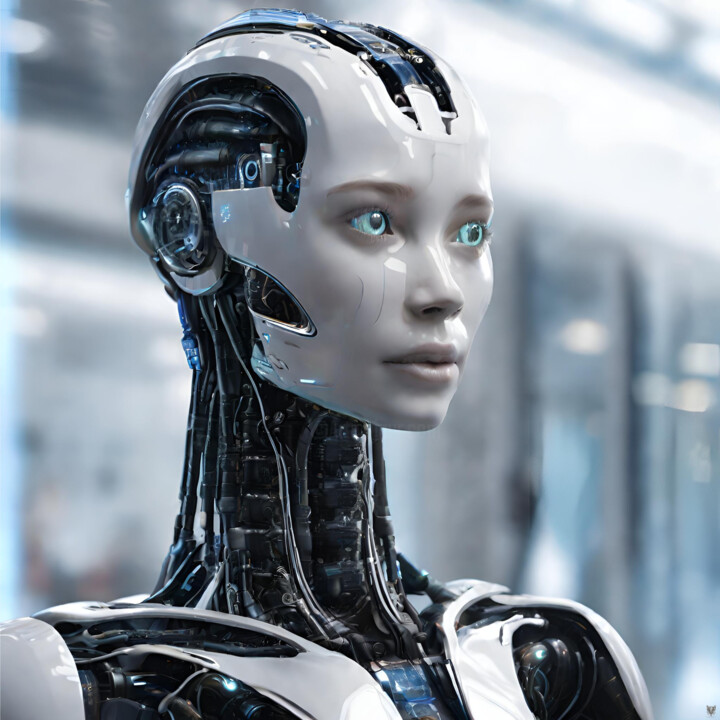
©2024 Reskatorsilver
Notable contemporary Robot Digital Arts
Contemporary Robot Digital Arts have become increasingly popular in recent years, showcasing the intersection between technology and creativity.
One notable artwork is "Kuka Robot Dance" created by ABB Robotics in 2012. This piece features an industrial robot performing a choreographed dance routine set to music, showcasing the precision and fluidity of robot movement.
Another prominent work is "Robot Swarm" by Rafael Lozano-Hemmer, created in 2014. This interactive installation features a swarm of small robots that move in response to the presence of visitors. As the audience moves through the exhibit, the robots create patterns and formations that change in real-time.
In 2018, Chico MacMurtrie’s "Border Crossers" made a powerful statement about immigration and the border wall. This installation featured humanoid robots that appeared to be climbing over a wall, symbolizing the struggle and determination of migrants seeking a better life.
Finally, "The Machine to Be Another" by BeAnotherLab, created in 2012, offers a unique perspective on the relationship between humans and machines. This virtual reality experience allows users to switch bodies with a robotic avatar, exploring the boundaries between physical and digital identity.
Overall, these contemporary Robot Digital Arts demonstrate the diverse ways in which artists are exploring the capabilities and limitations of technology in the creative process.


Reskatorsilver
Digitale Kunst | Verschillende maten

Reskatorsilver
Digitale Kunst | Verschillende maten

Reskatorsilver
Digitale Kunst | Verschillende maten
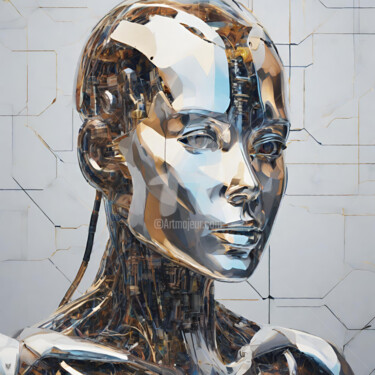
Reskatorsilver
Digitale Kunst | Verschillende maten

Reskatorsilver
Digitale Kunst | Verschillende maten
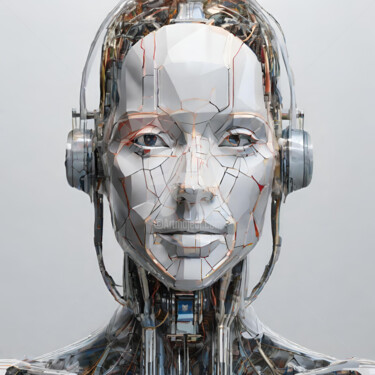
Reskatorsilver
Digitale Kunst | Verschillende maten

Kyrielle Fantasy
Digitale Kunst | Verschillende maten

Reskatorsilver
Digitale Kunst | Verschillende maten

Reskatorsilver
Digitale Kunst | Verschillende maten

Art Digital
Digitale Kunst | Verschillende maten

Reskatorsilver
Digitale Kunst | Verschillende maten

Reskatorsilver
Digitale Kunst | Verschillende maten

Reskatorsilver
Digitale Kunst | Verschillende maten

Pierre Rebichon
Digitale Kunst | Verschillende maten

Reskatorsilver
Digitale Kunst | Verschillende maten


Reskatorsilver
Digitale Kunst | Verschillende maten

Reskatorsilver
Digitale Kunst | Verschillende maten
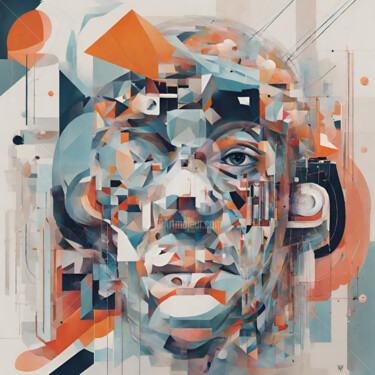
Reskatorsilver
Digitale Kunst | Verschillende maten

Reskatorsilver
Digitale Kunst | Verschillende maten

Reskatorsilver
Digitale Kunst | Verschillende maten

Reskatorsilver
Digitale Kunst | Verschillende maten

Reskatorsilver
Digitale Kunst | Verschillende maten

Reskatorsilver
Digitale Kunst | Verschillende maten

Reskatorsilver
Digitale Kunst | Verschillende maten

Kamil Szczepański
Digitale Kunst | Verschillende maten

Reskatorsilver
Digitale Kunst | Verschillende maten








